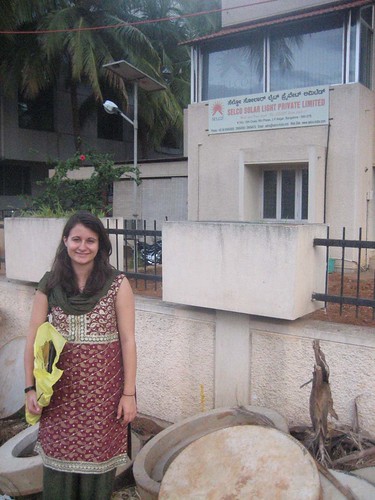Nearly 87 percent of India’s 640 thousand villages have population clusters of 2,000 people or fewer. In spite of a network of 3.6 million rural retail outlets that provide food and other consumer goods, there is very little active marketing and distribution of ecologically sustainable services to these rural outposts (India Empowered, 2006). The reasons? A conventional financial cost-benefit analysis suggests that these villages make-up the the last of “UNeconomical last mile”. They are too remote and their inhabitants are too poor. This is exactly where conventional financial analysis and conventional ideas are wrong!
SELCO India was created to debunk the myth that the rural poor are uneconomical customers. What is even more exciting about this organization is its commitment to providing sustainable technologies to the undeserved. Economic development coupled with environmental sustainability is really an idea/reality whose time is now (Read Hart’s Capitalism at the Crossroads” or see this video: Hart. Pursuing the green leap).
How does SELCO provide sustainable technologies to the underserved? SELCO uses its network of retail outlets and access to micro-finance institutions to provide for example, “solar solutions to rural and urban entrepreneurs”. In the last three years, they have developed innovative financial models allowing them to implement 9 projects across Karnataka and Gujarat. Some of the projects include: Solar powered sewing machines in Surendranagar, Gujarat, solar lights for silk worm farmers in Bellary, Karnataka, and solar lights for street vendors in Dharwad, Karnataka (we even saw a commercial application at IIMB).
How can a street vendor afford a INR 6,000 capital investment? This is where the innovative financing helps. Through The Renewable Energy and Energy Efficiency Partnership (REEEP), SELCO either subsidizes the interest payment or working capital costs to provide energy solutions. SELCO also takes the time to understand the cash-flow realities of such clients so that the financial products can be appropriately structured. SELCO is also interested in decreasing the cost of these technologies and can now offer solar solutions at INR 2,000 (Approx $40).
How could the GSE program work with SELCO? Our fluid conversation with the Manager of Innovations suggested that they are in the process of formalizing their volunteer program. They have worked with Colorado State University and the MIT design lab, all of which gives them a certain understanding of how to work with international educational institutions. All we have to do is agree on a project that is within our students scope and we are ready to help the “green leap”.
Hopefully, our students can learn from this and be part of the “trickle-up”.






